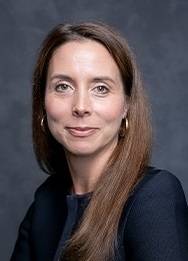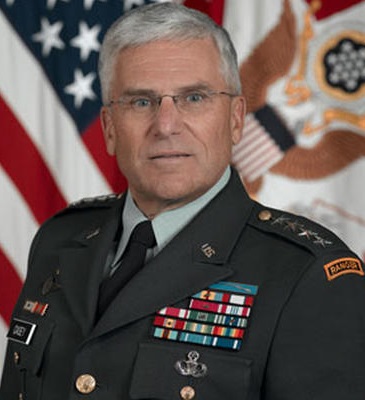AMP Up, Move Up with Cornell & CUES!
Ivy League-level leadership training, no campus visit required.
CUES and Cornell University bring you the only credit union-specific executive program designed to cultivate the next generation of visionary leaders.
In just nine months, participants are immersed in eight key C-suite mindsets to gain perspective and learn how top execs think.
Blending live online sessions taught by Cornell faculty and self-paced courses, this elite program combines rigorous coursework with practical, real-world application—positioning participants and their organizations for sustained success.
Participants earn two credentials and 6.4 CEUs after completing required coursework.
Your Fast-Track to the C-suite
The Fast Path to Executive Readiness
This immersive online experience will broaden your C-suite knowledge and provide you with practical insights you can apply immediately to accelerate your leadership journey.
What You’ll Experience
- Dive deep into eight C-suite roles: CEO, CFO, COO, CMO, CIO, CCO, CRO, CHRO
- Learn directly from world-class Cornell faculty in a flexible online format
- Build confidence in strategic thinking and gain an enterprise-level perspective
- Be promotion-ready when the time is right
- Earn dual credentials: the CUES Certified Credit Union Executive Manager (CEM) designation and the Executive Certificate in Management and Leadership from Cornell University and CUES
Download our “Convince Your Boss” letter now.
Build Your Bench
Fortify Your Leadership Pipeline for Long-Term Success
Strong leadership pipelines aren’t optional—they’re essential. The good news is, the next generation of C-suite leaders may already be on your team. CUES Advanced Management Program from Cornell University provides a high-impact, flexible solution to strengthen and prepare your executive bench.
Why HR and Talent Development Leaders Choose This Program
- Ivy League-level instruction from Cornell faculty, paired with credit union-focused curriculum
- In just nine months, your high-potential leaders will be ready for advancement when the time is right
- Strengthen your pipeline and help fulfill NCUA succession planning requirements for U.S. credit unions
- Develop strategic thinkers and instill an enterprise-level perspective across your leadership team
- 100% online with no travel required, minimizing disruption while scaling leadership development
Program Overview
CUES Advanced Management Program from Cornell University explores eight key C-suite roles—CEO, CFO, COO, CMO, CIO, CCO, CRO, CHRO—through project work, case studies, and immersive learning.
The final course brings it all together, helping participants strategically integrate their learnings and empowering them to lead across functions and cultivate growth mindsets.
Participants can expect to spend approximately 6-12 hours on each course, including online learning and project work, while building strong, real-world leadership skills along the way.

About eCornell
Ivy League Curriculum & Expert Faculty
Developed by Cornell University’s top faculty and industry leaders, eCornell courses are world-class and designed for practical impact. Courses are built on proven, high-quality curricula designed for practical application in the real world.
Expert-Led, Flexible Learning
Subject-matter experts guide, challenge, and help you apply concepts to your daily work. Structured start and end dates make courses easy to fit into busy schedules, allowing you to complete learning at your own pace.
Collaborative, Interactive Experience
You’ll join a cohort of credit union staff from across North America. Engaging discussions, shared experiences, and instructor-led feedback foster collaboration, networking, and practical learning.
Hands-On Practice & Application
Courses feature projects, scenarios, and interactive activities that challenge you to apply concepts directly to your organization.
Outcome-Focused Learning
Every course aims for tangible results. You’ll build problem-solving skills and confidently analyze, assess, and implement solutions you couldn’t before.
Download our “Convince Your Boss” letter now.
Program Details
Designed to fit seamlessly into your busy schedule, CUES Advanced Management Program from Cornell University offers a rigorous yet flexible leadership development experience.
Program Length
The program runs over nine months—from July 2026 to April 2027.
Learning Format
Participants complete eCornell courses independently, and join their classmates for live, interactive sessions, helping them build a network of colleagues.
Time Commitment
Participants complete eight self-paced courses on eCornell. Each course is open for two weeks and paired with a 90-minute live online session led by Cornell faculty.
Most participants spend approximately 6-12 hours on each course, including online learning and project work.
Credentials & Credits
Students who attend all sessions and complete required course work:
Earn the prestigious Certified Credit Union Executive Manager (CEM) designation
Receive an Executive Certificate in Management and Leadership from Cornell University and CUES
- Earn 6.4 CEUs
Course Schedule
Download the complete curriculum here.
Dates and times to be determined.
Program Orientation
Course 1: The CEO Mindset—Developing and Communicating Vision and Strategy
Live-Taught Session 1: Leading with a CEO Mindset
Course 2: The CFO Mindset—Understanding Financial Statements
Live-Taught Session 2: The CFO Mindset—Connecting the Numbers to Strategy and Performance
Course 3: The COO Mindset—Change, Disruption, and Growth
Live-Taught Session 3: The COO Mindset
Course 4: Brand Purpose
Live-Taught Session 4: The CMO Mindset: Brand Purpose
Course 5: AI and Digital Technology: Opportunities and Pitfalls
Live-Taught Session 5: AI and Business Transformation
Course 6: The CCO Mindset—Structuring Business Agreements for Success
Live-Taught Session 6: The CRO Mindset—The Relationship between the CRO and Legal Counsel
Course 7: The CHRO Mindset—Motivating People for High Performance
Live-Taught Session 7: The CHRO Mindset—Leading High-Performance Teams
Course 8: Future Looking Skills—Preparing for the Future
Live-Taught Session 8—Final Thoughts: What is Your Mindset? How to Lead Change
Course Instructors
Live Session Instructors
Yes. Students who attend all sessions and complete required course work:
- Receive an Executive Certificate in Management and Leadership from Cornell University and CUES
- Earn the prestigious Certified Credit Union Executive Manager (CEM) designation
You’ll earn 6.4 CEUs upon completion of the program.
This unique nine-month program has been developed specifically for the credit union industry by instructional designers from Cornell University and CUES. This combination results in a more effective learning experience and enhanced outcomes.
CUES Advanced Management Program runs from July through April and is delivered over the course of two semesters. During that time, you’ll take eight eCornell courses at your own pace within a two-week time frame, along with a bonus preview week. They are interspersed with seven 90-minute Cornell faculty-led live online sessions.
CUES has partnered with Cornell University to meet the development needs of high potential/high performing credit union staff—particularly the key managers, directors, AVPs and VPs at your organization.
Live sessions will be recorded and available for playback if you miss a session.
The comfort and well-being of our attendees is of utmost importance to us; we will make every effort to make sure you are comfortable at our events!
Please email events@cues.org as soon as you know you’re attending a CUES event. Be sure to include your name, credit union, the CUES event you are registered for, and everything we need to know to accommodate your request.
We’ll be in touch with any questions we have, and let you know how we can help.
ALL CANCELLATIONS MUST BE IN WRITING. (cues@cues.org)
- Prior to 60 days – full refund
- 31-60 days before start of event – 50% refund
- 0-30 days before start of event – no refunds or credits for future events given
- Due to financial obligations incurred by CUES, no refunds or credits will be issued on cancellation requests less than 30 days prior to the start of the event.
- Substitute attendees are welcome, subject to eligibility.
CUES reserves the right to cancel or reschedule the event due to unforeseen circumstances, and will refund fees if the event is rescheduled or location is changed and you are unable to attend.
AMP Up, Move Up with Cornell & CUES!
Ivy League-level leadership training, no campus visit required.
CUES and Cornell University bring you the only credit union-specific executive program designed to cultivate the next generation of visionary leaders.
In just nine months, participants are immersed in eight key C-suite mindsets to gain perspective and learn how top execs think.
Blending live online sessions taught by Cornell faculty and self-paced courses, this elite program combines rigorous coursework with practical, real-world application—positioning participants and their organizations for sustained success.
Participants earn two credentials and 6.4 CEUs after completing required coursework.
Your Fast-Track to the C-suite
The Fast Path to Executive Readiness
This immersive online experience will broaden your C-suite knowledge and provide you with practical insights you can apply immediately to accelerate your leadership journey.
What You’ll Experience
- Dive deep into eight C-suite roles: CEO, CFO, COO, CMO, CIO, CCO, CRO, CHRO
- Learn directly from world-class Cornell faculty in a flexible online format
- Build confidence in strategic thinking and gain an enterprise-level perspective
- Be promotion-ready when the time is right
- Earn dual credentials: the CUES Certified Credit Union Executive Manager (CEM) designation and the Executive Certificate in Management and Leadership from Cornell University and CUES
Download our “Convince Your Boss” letter now.
Build Your Bench
Fortify Your Leadership Pipeline for Long-Term Success
Strong leadership pipelines aren’t optional—they’re essential. The good news is, the next generation of C-suite leaders may already be on your team. CUES Advanced Management Program from Cornell University provides a high-impact, flexible solution to strengthen and prepare your executive bench.
Why HR and Talent Development Leaders Choose This Program
- Ivy League-level instruction from Cornell faculty, paired with credit union-focused curriculum
- In just nine months, your high-potential leaders will be ready for advancement when the time is right
- Strengthen your pipeline and help fulfill NCUA succession planning requirements for U.S. credit unions
- Develop strategic thinkers and instill an enterprise-level perspective across your leadership team
- 100% online with no travel required, minimizing disruption while scaling leadership development
Program Overview
CUES Advanced Management Program from Cornell University explores eight key C-suite roles—CEO, CFO, COO, CMO, CIO, CCO, CRO, CHRO—through project work, case studies, and immersive learning.
The final course brings it all together, helping participants strategically integrate their learnings and empowering them to lead across functions and cultivate growth mindsets.
Participants can expect to spend approximately 6-12 hours on each course, including online learning and project work, while building strong, real-world leadership skills along the way.

About eCornell
Ivy League Curriculum & Expert Faculty
Developed by Cornell University’s top faculty and industry leaders, eCornell courses are world-class and designed for practical impact. Courses are built on proven, high-quality curricula designed for practical application in the real world.
Expert-Led, Flexible Learning
Subject-matter experts guide, challenge, and help you apply concepts to your daily work. Structured start and end dates make courses easy to fit into busy schedules, allowing you to complete learning at your own pace.
Collaborative, Interactive Experience
You’ll join a cohort of credit union staff from across North America. Engaging discussions, shared experiences, and instructor-led feedback foster collaboration, networking, and practical learning.
Hands-On Practice & Application
Courses feature projects, scenarios, and interactive activities that challenge you to apply concepts directly to your organization.
Outcome-Focused Learning
Every course aims for tangible results. You’ll build problem-solving skills and confidently analyze, assess, and implement solutions you couldn’t before.
Download our “Convince Your Boss” letter now.
Program Details
Designed to fit seamlessly into your busy schedule, CUES Advanced Management Program from Cornell University offers a rigorous yet flexible leadership development experience.
Program Length
The program runs over nine months—from July 2026 to April 2027.
Learning Format
Participants complete eCornell courses independently, and join their classmates for live, interactive sessions, helping them build a network of colleagues.
Time Commitment
Participants complete eight self-paced courses on eCornell. Each course is open for two weeks and paired with a 90-minute live online session led by Cornell faculty.
Most participants spend approximately 6-12 hours on each course, including online learning and project work.
Credentials & Credits
Students who attend all sessions and complete required course work:
Earn the prestigious Certified Credit Union Executive Manager (CEM) designation
Receive an Executive Certificate in Management and Leadership from Cornell University and CUES
- Earn 6.4 CEUs
Course Schedule
Download the complete curriculum here.
Dates and times to be determined.
Program Orientation
Course 1: The CEO Mindset—Developing and Communicating Vision and Strategy
Live-Taught Session 1: Leading with a CEO Mindset
Course 2: The CFO Mindset—Understanding Financial Statements
Live-Taught Session 2: The CFO Mindset—Connecting the Numbers to Strategy and Performance
Course 3: The COO Mindset—Change, Disruption, and Growth
Live-Taught Session 3: The COO Mindset
Course 4: Brand Purpose
Live-Taught Session 4: The CMO Mindset: Brand Purpose
Course 5: AI and Digital Technology: Opportunities and Pitfalls
Live-Taught Session 5: AI and Business Transformation
Course 6: The CCO Mindset—Structuring Business Agreements for Success
Live-Taught Session 6: The CRO Mindset—The Relationship between the CRO and Legal Counsel
Course 7: The CHRO Mindset—Motivating People for High Performance
Live-Taught Session 7: The CHRO Mindset—Leading High-Performance Teams
Course 8: Future Looking Skills—Preparing for the Future
Live-Taught Session 8—Final Thoughts: What is Your Mindset? How to Lead Change
Course Instructors
Live Session Instructors
Yes. Students who attend all sessions and complete required course work:
- Receive an Executive Certificate in Management and Leadership from Cornell University and CUES
- Earn the prestigious Certified Credit Union Executive Manager (CEM) designation
You’ll earn 6.4 CEUs upon completion of the program.
This unique nine-month program has been developed specifically for the credit union industry by instructional designers from Cornell University and CUES. This combination results in a more effective learning experience and enhanced outcomes.
CUES Advanced Management Program runs from July through April and is delivered over the course of two semesters. During that time, you’ll take eight eCornell courses at your own pace within a two-week time frame, along with a bonus preview week. They are interspersed with seven 90-minute Cornell faculty-led live online sessions.
CUES has partnered with Cornell University to meet the development needs of high potential/high performing credit union staff—particularly the key managers, directors, AVPs and VPs at your organization.
Live sessions will be recorded and available for playback if you miss a session.
The comfort and well-being of our attendees is of utmost importance to us; we will make every effort to make sure you are comfortable at our events!
Please email events@cues.org as soon as you know you’re attending a CUES event. Be sure to include your name, credit union, the CUES event you are registered for, and everything we need to know to accommodate your request.
We’ll be in touch with any questions we have, and let you know how we can help.
ALL CANCELLATIONS MUST BE IN WRITING. (cues@cues.org)
- Prior to 60 days – full refund
- 31-60 days before start of event – 50% refund
- 0-30 days before start of event – no refunds or credits for future events given
- Due to financial obligations incurred by CUES, no refunds or credits will be issued on cancellation requests less than 30 days prior to the start of the event.
- Substitute attendees are welcome, subject to eligibility.
CUES reserves the right to cancel or reschedule the event due to unforeseen circumstances, and will refund fees if the event is rescheduled or location is changed and you are unable to attend.
Join the Emerging Leader Community—Raise Your Hand!
Are you an emerging leader ready to grow your career? We're building a community just for you. Get early access to resources, expert insights, and networking opportunities. Sign up now to stay informed!













